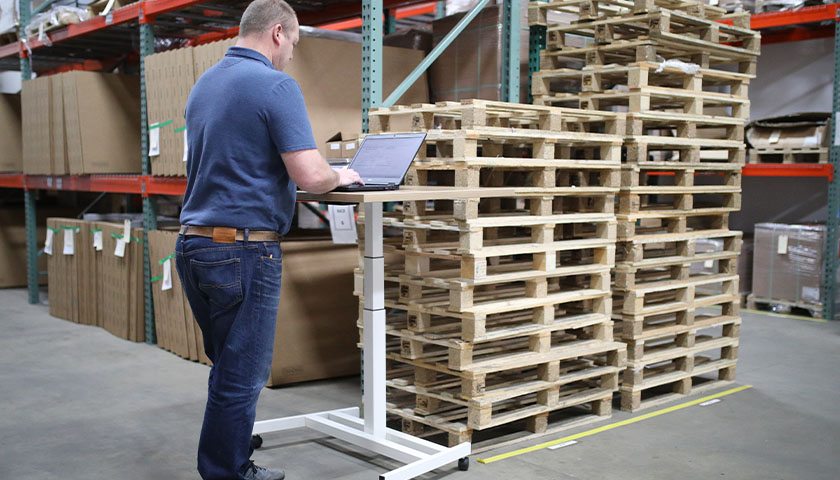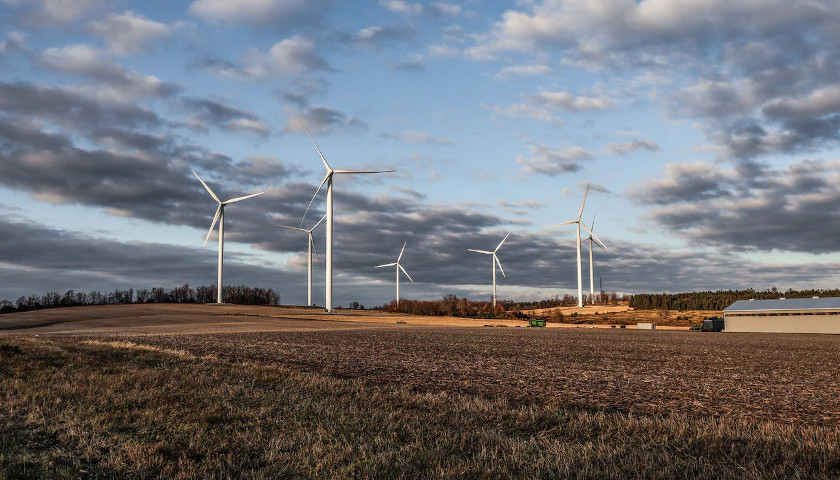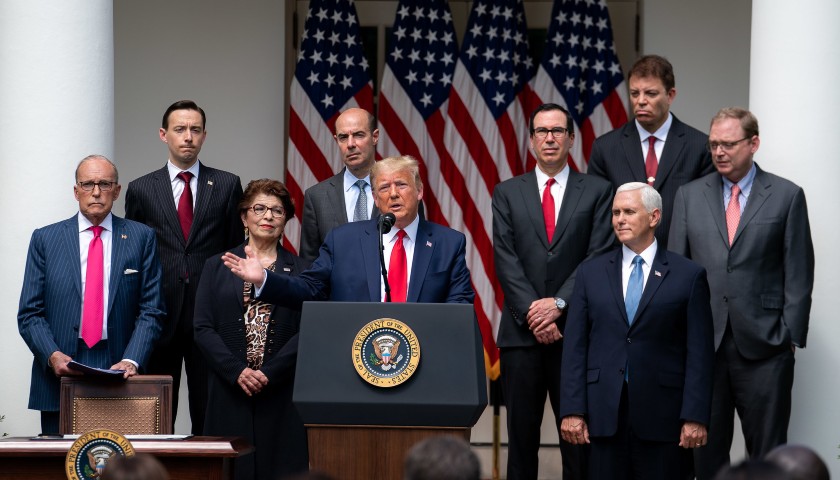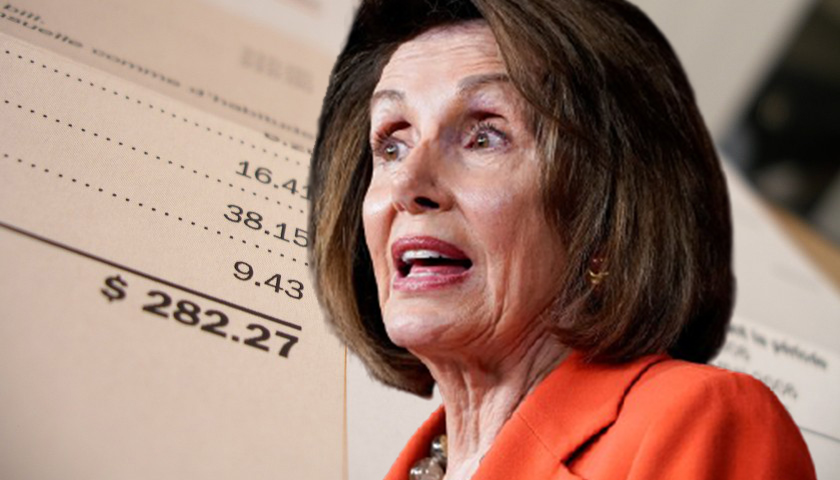Reports of shoplifting and vehicle theft increased considerably in Springfield, Ohio, following the arrival of thousands of Haitian refugees, according to data obtained by the Daily Caller News Foundation through a records request. The town, which had a population of 58,622 in 2020, has taken in between 12,000 and 20,000 Haitian refugees over the past three years, marking a population increase of between 20.4% and 34.1%. From 2021 to 2023, Springfield also saw a 51.5% jump in motor vehicle theft reports and a 112.8% spike in reports of shoplifting, data provided by the Springfield Police Division shows.
Read MoreTag: labor
Survey: A Third of U.S. Small Businesses Can’t Pay Rent Because of Inflation
More than a third of small businesses can’t pay rent, newly released data shows.
The small business network Alignable released new survey results that found that 35% of U.S. small business owners “could not pay their rent in full or on time in June.”
Read MoreCommentary: The World Does Not Run on Magic
At a recent hearing before the Senate Committee on Homeland Security, the CEO of Colonial Pipeline made an admission which illustrates quite well our negligence and improvidence. The company paid out nearly $5 million in blackmail money to an unknown hacker when the pipeline was shut down for several days. That, of course, was bad enough, and most of the man’s testimony had to do with the technicalities of which government agency was notified and when, and what the company’s computer experts did to remedy the situation.
But there was another piece of his testimony, one that you had to look hard to find in the news reports. He testified that most of the men who could operate the controls on the pipeline have died or retired, so that the 5,500-mile line must rely almost wholly upon computerized systems for its operation. That means, of course, that we are vulnerable to attacks by people who do not have to take a guard at gunpoint, or dig a big hole somewhere that no one will notice.
Read MoreInflation Hits Highest Level in 39 Years
The Consumer Price Index (CPI) increased 0.9% in November, bringing the key inflation indicator’s year-over-year increase to 6.8%, the highest figure in four decades.
The CPI’s increase is the largest increase in four decades, up from October’s 6.2% according to the U.S. Bureau of Labor Statistics (BLS) report released Friday morning. Experts surveyed by CNBC projected inflation would increase 0.7% in November, translating to a 6.7% gain on a year-over-year basis.
“These are frighteningly high inflation numbers, the likes of which we haven’t seen for decades,” Allen Sinai, chief global economist and strategist at Decision Economics, Inc., told The Wall Street Journal.
Read MoreThe U.S. Is Running Out of Warehouse Space, Intensifying Supply Chain Bottlenecks and Adding to Inflation
Available warehouse space near significant distribution hubs fell to historic lows in the third quarter of 2021, placing even more pressure on supply chain bottlenecks and increasing inflation, according to The Wall Street Journal.
Demand for industrial real estate in the third quarter outpaced supply by 41 million square feet, increasing the vacancy rate to 3.6%, down 0.7% from Q3 2020 and marking the lowest level since 2002, according to data from CBRE, the WSJ reported.
Warehouses near the Los Angeles and Long Beach ports in California, some of the most important distribution points of entry in the country, reached a vacancy rate of 1% in Q3 this year, according to the WSJ. During the same quarter in 2020, the vacancy rate was 2.3%.
Read MoreCommentary: The Democrats’ Topsy-Turvy Spin Machine
The guessing game of how long the levitation of the Biden presidency can be taken seriously seems to be entering a new phase. The deluge of illegal entries into the United States at the southern border is now running at a rate of closer to 3 million than 2 million a year and yet we still see and hear the bobbling talking head of the Homeland Security Secretary Alejandro Mayorkas assuring us, “The southern border is closed.”
The media has provided almost no coverage of this calamitous invasion. A recent Trafalgar poll found that 56 percent of Americans don’t think Joe Biden is “fully executing the duties of his office,” yet the docile White House press corps continues to ask him about his ice cream and other such probing questions of national interest. Apart from a rising stock market and a quieter atmosphere, the record of the new administration is one of almost complete failure.
The oceanic influx of unskilled labor at the southern border cannot fail to aggravate unemployment and depress the incomes for the vulnerable sectors of what, under President Trump, was a fully employed workforce. The administration has reduced domestic oil production and squandered the country’s status as an energy self-sufficient state. These are all familiar issues to those who follow public affairs, but the 95 percent Democratic-supporting media preserve the cocoon of a fairyland Biden presidency, whose bumbling chief flatters himself with comparisons to Franklin D. Roosevelt.
Read MoreAt Least 40 Percent of NIAID and FDA Employees Have Not Been Vaccinated, According to Fauci and Marks
At least 40 percent of National Institute of Allergy and Infectious Diseases (NIAID), and Food and Drug Administration (FDA) employees are refusing to get the COVID-19 vaccine according to NIAID Director Dr. Anthony Fauci, and FDA official Dr. Peter Marks.
During a Senate Health, Education, Labor, and Pensions Committee hearing Tuesday on efforts to combat the COVID-19 pandemic, Senator Richard Burr (R-Va.) asked Fauci, Marks, and Centers for Disease Control and Prevention (CDC) Director Dr. Rochelle Walensky what percentage of their own employees were vaccinated.
Both Fauci and Marks estimated that a little more than half—perhaps around 60 percent of their employees—have been vaccinated. Walensky waffled, saying only that she was “encouraging employees to get vaccinated,” but couldn’t say how many have actually done so.
Read MoreAnalysis: Biden’s New Dawn of Net-Zero Is Looking Like a Dark Day for Labor
Last Labor Day, candidate Joe Biden made an impassioned pitch to leaders and members of the AFL-CIO, America’s largest labor federation. Stressing that “the great American middle class was built by unions,” he jabbed his finger in the air for emphasis as he promised, “I’m going to be the strongest labor president you have ever had,” drawing a smile from his longtime ally and friend, AFL-CIO President Richard Trumka.
Read MoreCommentary: H-1B Visa Change is Good News for American Workers
Though his administration has been marked by setbacks and subversion, President Trump is looking to add a policy notch to his belt and, more importantly, a win for beleaguered American workers.
On October 6, the U.S. Department of Homeland Security announced reforms of the H-1B nonimmigrant visa program. The H-1B allows foreign nationals to enter the country to work in “specialty occupations”—but that term, like the program itself, is riddled with problems. These visa workers are commonly used to replace Americans, doing the same job for less pay and often without the same level of skill. Americans are often compelled to train their foreign replacements.
Read MoreCommentary: Economic Bounce Back Continues with 14.1 Million More Jobs Recovered Since April
Another 275,000 jobs were added to the U.S. economy in the month of September, according to the Bureau of Labor Statistics’ (BLS) household survey, and 661,000 in the establishment survey, adding to the miraculous economic recovery that has taken place since COVID-19 lockdowns this spring as now states and businesses continue reopening at a rapid clip.
Read MoreCommentary: Pelosi Holds Millions of Small Businesses Hostage While Working Families Struggle
At the height of the COVID-19 pandemic, when a lot less was known about the virus and how to counter it, and while the nation was still ramping up production of testing and hospital resources including ventilators needed, 25 million jobs were lost across the country, according to Bureau of Labor Statistics data.
Since labor markets bottomed in April, 13.8 million jobs have been recovered, as states have begun steadily reopening in the months since.
Read More










